- 翰林提供学术活动、国际课程、科研项目一站式留学背景提升服务!
- 400 888 0080
IB DP Biology: HL复习笔记9.1.4 Adaptations of Xerophytes
Adaptations of Xerophytes
- Plants that live in conditions with a plentiful supply of fresh water have leaves with a short diffusion distance through to the stomata and a large surface area provided by the air spaces between the leaf cells
- These factors make them vulnerable to water loss
- Plants that live in conditions where fresh water is limited often have very different leaf structure to that described above; they have evolved effective adaptations to conserve water e.g.
- Very few stomata
- Sunken stomata
- Hairs surrounding stomata
- Needle-shaped or small leaves
- Thickened waxy cuticle
- Plants with adaptations to conserve water are described as xerophytic, or known as xerophytes.
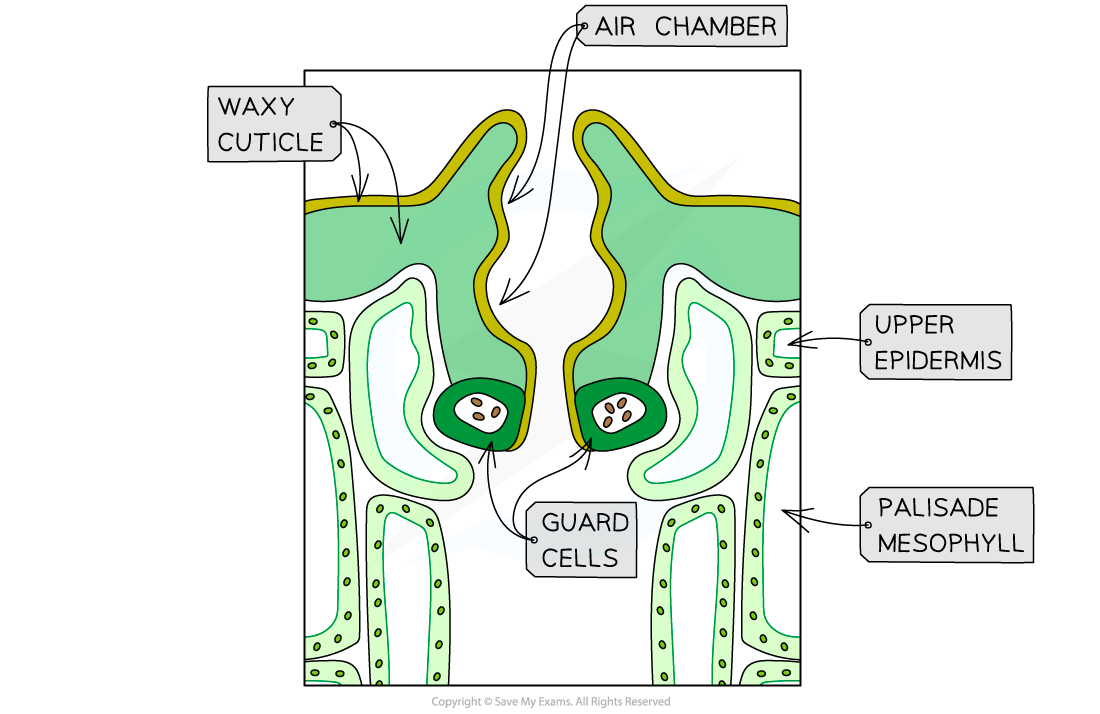 Xerophytes have features such as sunken stomata and a thickened waxy cuticle
Xerophytes have features such as sunken stomata and a thickened waxy cuticleCacti
- Cacti are well-studied xerophytes usually found in the deserts of the USA
- They have several xerophytic adaptations
- Their leaves are reduced to spines that can no longer photosynthesise
- This reduces their leaf surface area and so reduces water loss
- Photosynthesis occurs in the green stem which possesses chloroplasts
- Stomata are located on the stem and they are more sparsely distributed than they would be on a regular leaf
- The stem has a thick cuticle and is very large in diameter which allows it to store water
- The stem can expand to take on water, enabling water storage when it is available
- Cacti carry out a specialised form of photosynthesis known as CAM photosynthesis that enables them to keep their stomata closed during the day
- This reduces water loss by evaporation in the heat of the day
- There are both shallow and deep penetrating roots which allow access to all available water
- Their leaves are reduced to spines that can no longer photosynthesise
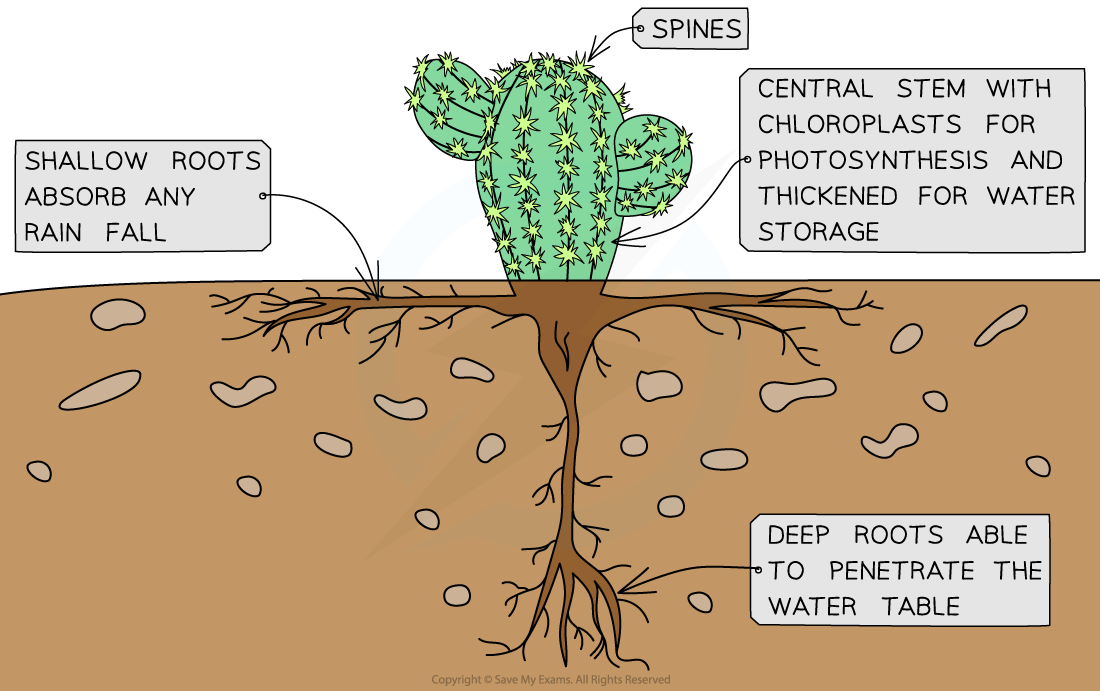 Cacti have several xerophytic features to reduce water loss
Cacti have several xerophytic features to reduce water lossMarram Grass
- Marram grass is commonly found on sand dunes, another example of a dry environment where plants have evolved to survive
- Marram grass leaves are well adapted to minimise water loss
- Leaves are rolled up to reduce the exposure of surfaces to the wind and so reduce water loss by evaporation
- The stomata are sunken in pits to reduce water loss by evaporation
- The inner surface of the leaf possesses a large number of hairs which shield the stomata, again reducing water loss
- The exposed surface has a thick waxy cuticle to reduce evaporation
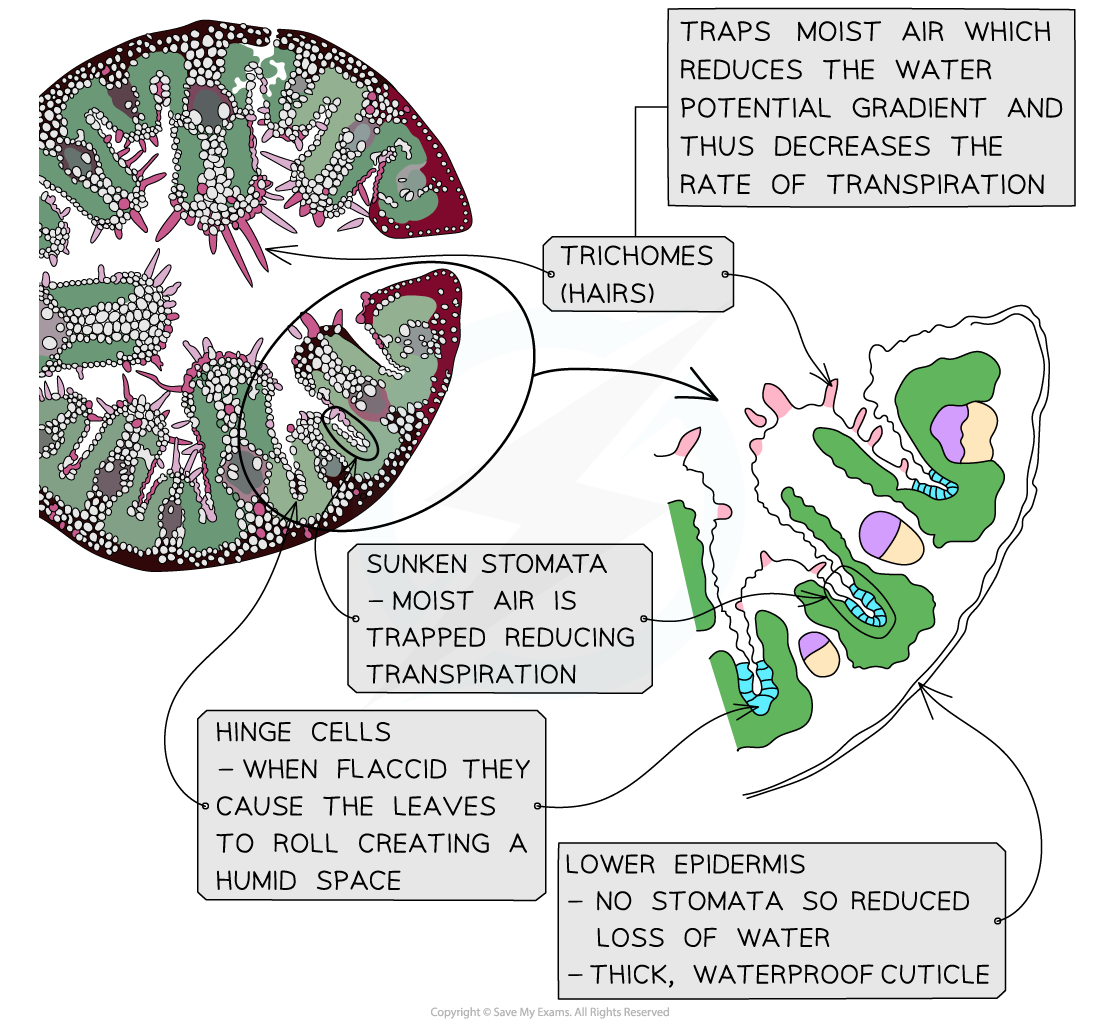
Marram grass has several features to reduce water loss by evaporation. Note that the term 'water potential gradient' refers here to the difference in water vapour concentration between the inside and outside of a leaf, while the term flaccid refers to cells that have lost water by osmosis.
Xerophytic adaptations table
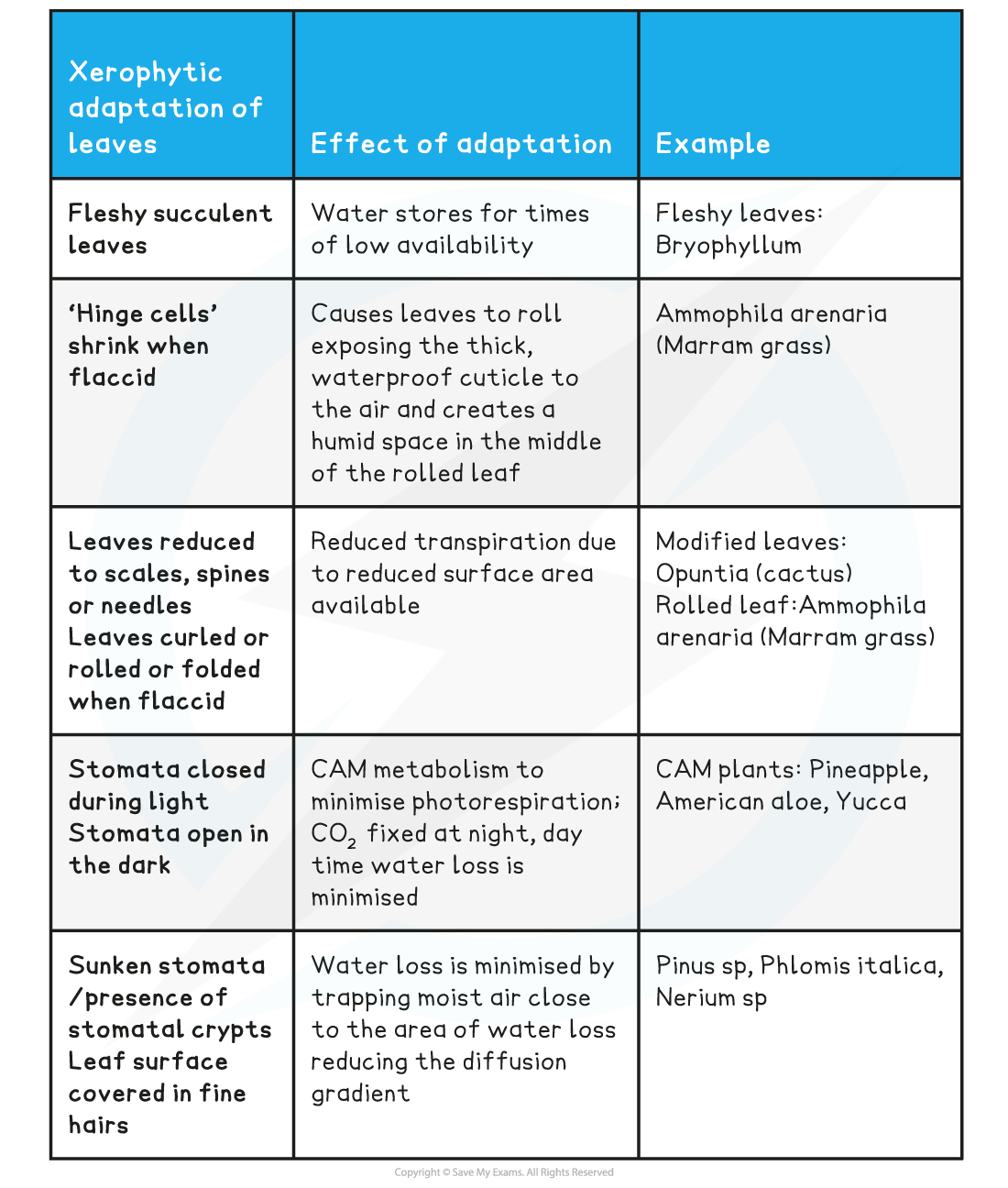
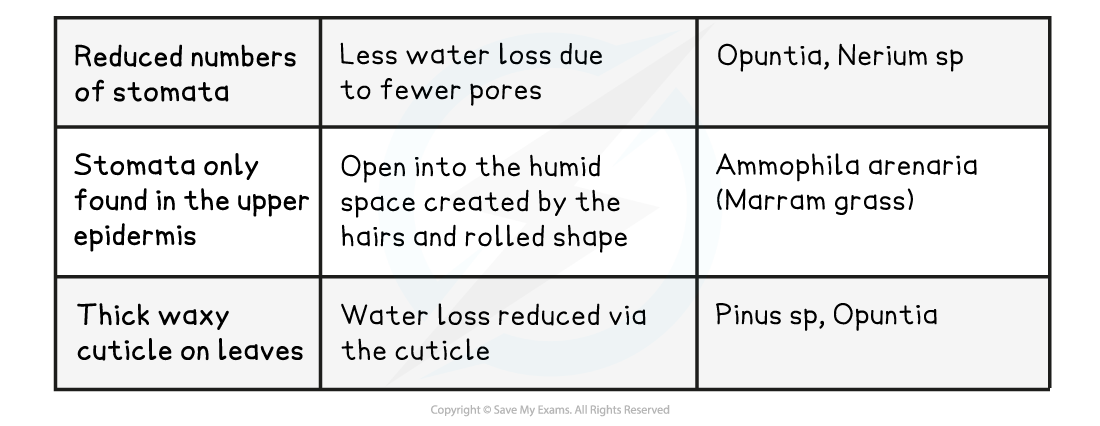


Adaptations of Halophytes
- Halophytes are plants that are adapted to saline, or salty, conditions
- Halo = salt
- Saline soils are soils that contain high concentration of salts, such as coastal salt marshes and land where the tide comes in and out
- Halophytes have physiological and structural adaptations to survive in these conditions, including
- Halophytes have the ability to sequester, or store away, salts within their cell wall or vacuoles
- Some halophytes can concentrate the salts they absorb in certain leaves, which then fall off the plant
- Halophytes can shed their leaves to reduce water loss
- In such conditions the stem is able to take over the role of photosynthesis
- Water loss reducing adaptations such as reduced leaf surface area and sunken stomata can be found in some halophytes
- Some halophytes have salt glands that actively excrete salt to stop it from building up
- Halophytes have deep roots to reach fresh water underground
转载自savemyexams


最新发布
© 2025. All Rights Reserved. 沪ICP备2023009024号-1








